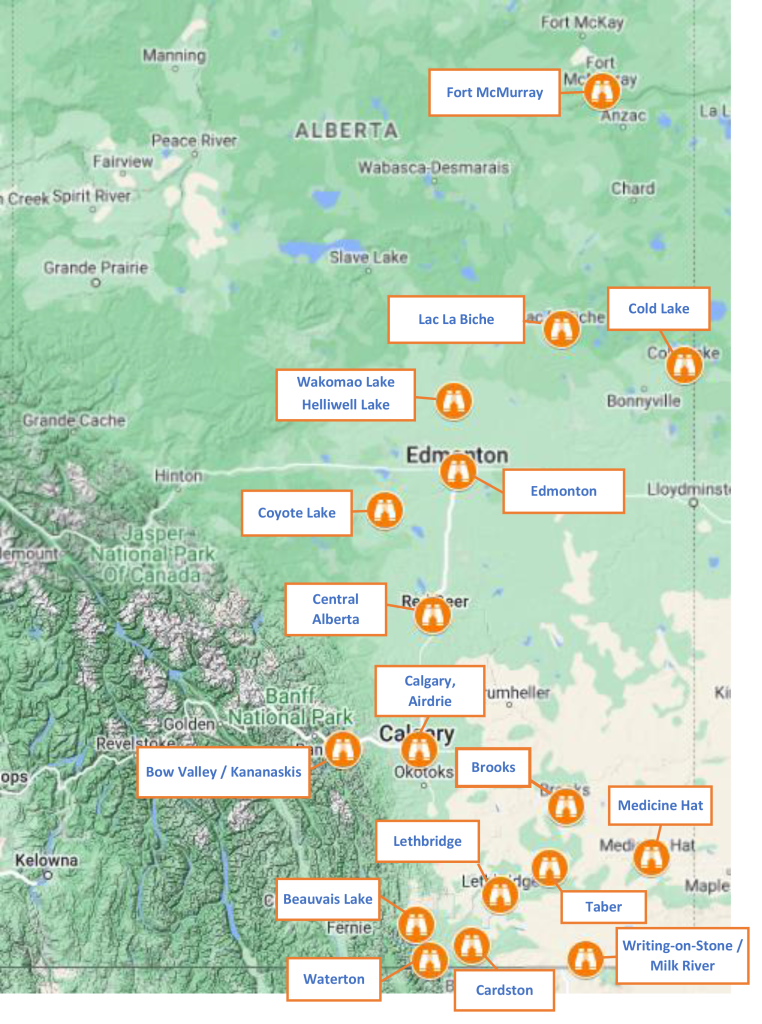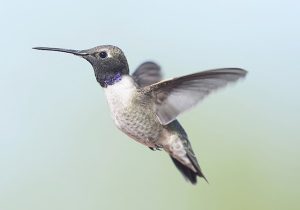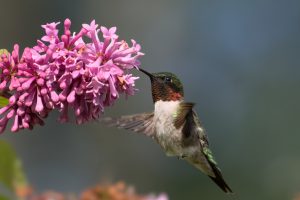May Bird Count
The May Bird Count is a component of the annual May Species Count. This project was initiated in 1976 to track bird populations across Alberta at a fixed time of year, providing insight into population trends over time. It was also intended to encourage cooperative efforts toward understanding local natural history. Last year, over 400 people participated in the count. The highest number of observations occurred in 2011, with over 300,000 birds counted.
With the advent of eBird, new possibilities have opened to make the May Bird Count more efficient and to boost its value to science and conservation. By using eBird for recording observations, participants in the May Bird Count contribute to the world’s largest bird database, available at no charge to birders, educators, and researchers. The high profile of eBird ensures that the data are used for conservation applications. In addition, eBird provides many benefits to birders, which are summarized here.
How to Participate
The May Bird Count takes place in late May. To participate in the count, begin by getting in touch with the local organizer in your region. The accompanying map shows the active count areas, and the contact information you need is provided below. Your local organizer will tell you what days the count will take place in your area and how to get involved.
Because of the many benefits that eBird provides, we encourage its use for the May Bird Count. The process is straightforward. When you begin your survey, create a new checklist and link it to the nearest hotspot. If you are new to eBird, see our Getting Started Guide. When you are done, save your list and share it with the eBird account that your local organizer has provided to you (if available).
The use of eBird for the May Bird Count is at an early stage, and many count regions are still collecting survey results in the form of Excel spreadsheets or Word templates. Your local organizer will let you know their preferred method. Even if your observations have to be submitted manually (rather than sharing checklists), it is still a good idea to use eBird when in the field. This ensures that your observations contribute to the eBird database. Instructions for downloading your checklists from eBird are available here.
To maximize the value of your observations, be sure to follow eBird best practices. In particular, record all species you are able to see or hear and mark your checklist as "complete" in eBird. Also, it is better to create multiple shorter checklists than one long list for the entire day. This improves the quality of the data for scientific analysis. Therefore, begin a new checklist whenever you have moved more than 4 km.
Contacting Local Organizers
Contact information for Volunteer Compilers will be posted prior to each count year. Email Nature Alberta at info@naturealberta.ca to be connected with a count circle outside of regular volunteer recruitment times.
Count Locations
(Click to enlarge)
Updates
May Bird Count 2024 Results
Results are in for the 2024 May Bird Count!
May Species Count 2024
Last Weekend in May
All Across Alberta!



